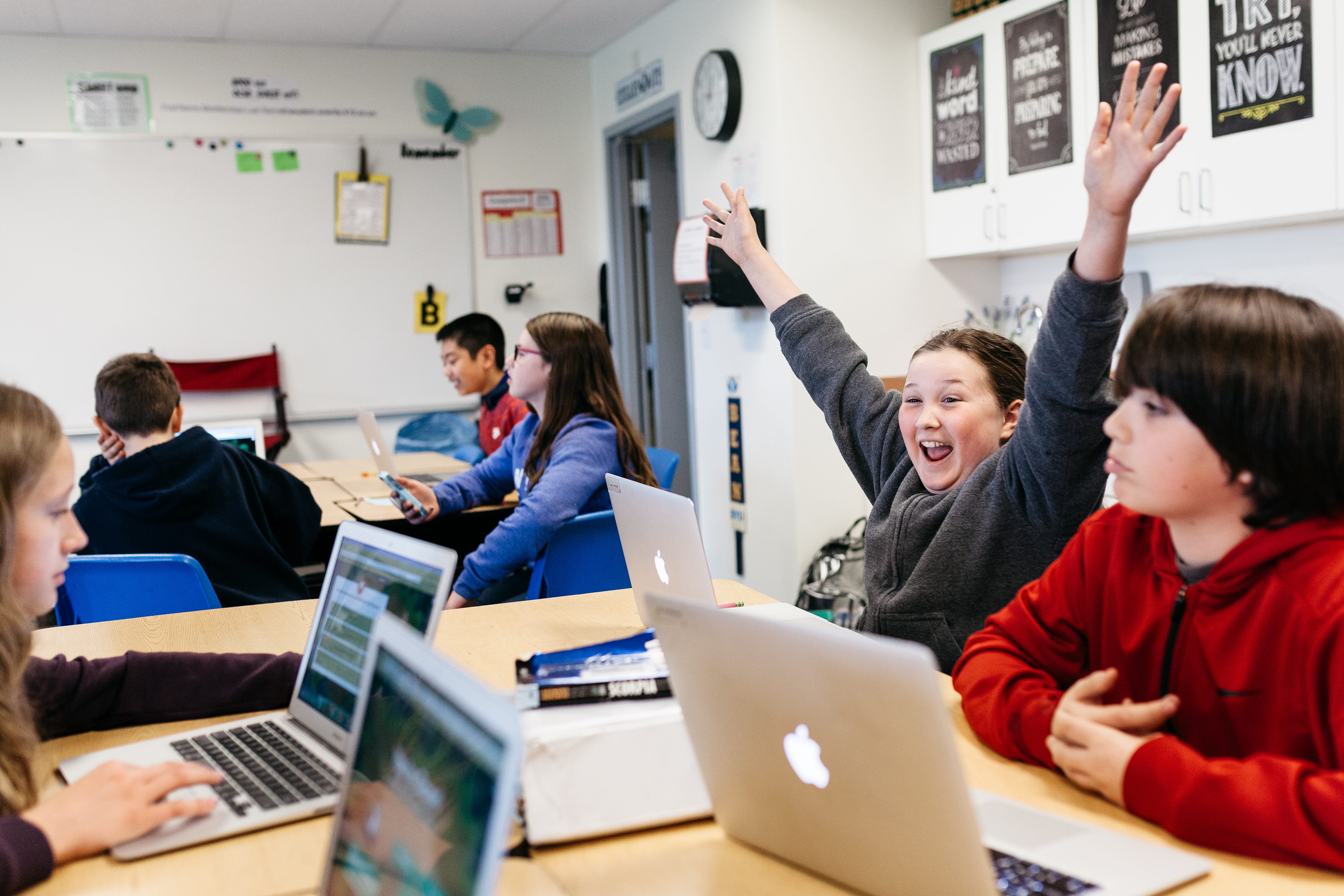Schools and districts are increasingly adopting the tenets of social-emotional learning (SEL) to help students thrive by becoming more adaptable to challenges and change. In this eight-part series, we examine how SEL can be incorporated in the classroom and how EdTech can help.
First, we take a holistic look at SEL. Then we dive into five SEL competencies: self-efficacy and self-awareness; social-emotional awareness; identity and emotional awareness; social awareness and collaboration; and critical thinking. We finish by exploring the importance of student mental health and how to create a culturally responsive classroom.
Read on as we dig into the SEL competency of social-emotional awareness.
What is social-emotional awareness?
The goal of social-emotional awareness is to help students learn to establish and maintain strong relationships with others. This multifaceted competency includes building communication skills — such as expressing oneself, actively listening, and negotiating — as well as working with others to share, take turns, and hear and process a variety of viewpoints.
Social-emotional awareness is a basic building block for developing relationships and interacting with others in healthy ways. To develop and sharpen their social-emotional awareness, students need the opportunity to engage with their peers in both contrived and organic settings that challenge and test their skills and approaches to others in safe ways.
SEL and social-emotional awareness in the classroom
Classroom settings present opportunities to practice social-emotional awareness because being in that space requires continual interaction with peers, teachers, and others. Educators can help their classroom work on this SEL competency through collaborative activities requiring students to develop social-emotional awareness skills. Those can include asking for and offering assistance, negotiating conflict, and sharing their work and providing constructive feedback to others when they do the same.
Group work offers an especially critical means of developing this competency. To prompt students to practice navigating interactions with a wide range of individuals, educators should consider mixing up preset or self-formed learning groups often, so students have the chance to work with different peers, particularly those toward which they may not naturally gravitate. The challenge this helps create — while at times uncomfortable — will start to prepare students for times later in life when they have limited control over who they work with.
Sharing emotions provides another way for students to develop social-emotional awareness. As students practice using words to describe how they feel, they become more adept at identifying their own feelings and exhibiting a range of emotions in a healthy form. One example of a way to help students learn to recognize different emotions within themselves (and their intensity), is to ask them to use a scale of 1 to 10 to rate how “anxious” they feel before a test. This exercise also offers an opportunity to help students take steps to process these emotions physically and cognitively, and to reinforce the idea that no emotions they feel need to have a negative label attached.
Labeling emotions gives students the language to seek support as needed. For example, educators can lead a classroom discussion about what your body feels like when you feel angry and offer healthy ways to relieve that pressure, such as running in place, dancing, or jumping up and down, rather than a more disruptive behavior.
Graphing and sharing the answers to these types of questions can show individual class members that they are often not the only person who feels the way they do. The results can also alert an educator that they may need to adapt the rest of the day to fit the current classroom mood or help students adjust their moods using an activity such as deep-breathing exercises. The results can also alert educators to individuals who need additional support with the activity in question or who are experiencing stressors outside of the classroom that are affecting not only their mood, but also their ability to learn.
How EdTech can nurture social-emotional awareness
Many EdTech tools provide great options to support and strengthen the skills required to develop social-emotional awareness in the classroom, such as working collaboratively and communicating effectively.
Interactive displays can serve as useful collaborative tools for tapping into social-emotional awareness skills. Educators can use them to have students model problem-solving techniques or work through a problem while the rest of the class observes and offers feedback. This can be coupled with check-in activities before and after working through a problem. Connecting a digital whiteboard to individual students’ devices enables students to further share their thinking through group work. Educators can use such tools for group brainstorming activities, and they can decide whether student contributions should appear attributed or anonymous.
Seeing the aggregation of their classmates’ answers and opinions helps students begin to recognize that there may be several correct answers to a single question, or several paths to the same answer. Tools that enable students to share those ideas and answers, and the thought processes behind them, can highlight the valuable contributions made by all class members.
Want to learn more about how EdTech can help educators bring skill-building around social-emotional awareness into every lesson? Explore Lumio’s library of activities and resources that can help students flex the skills that contribute to social-emotional awareness in the classroom.



